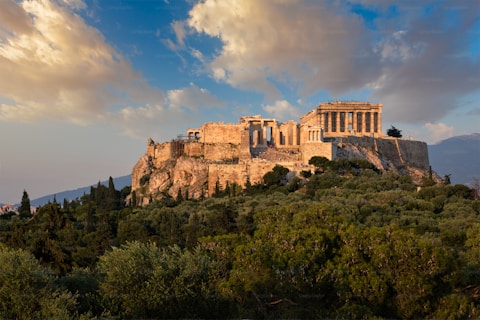Castles & Fortresses of the Peloponnese
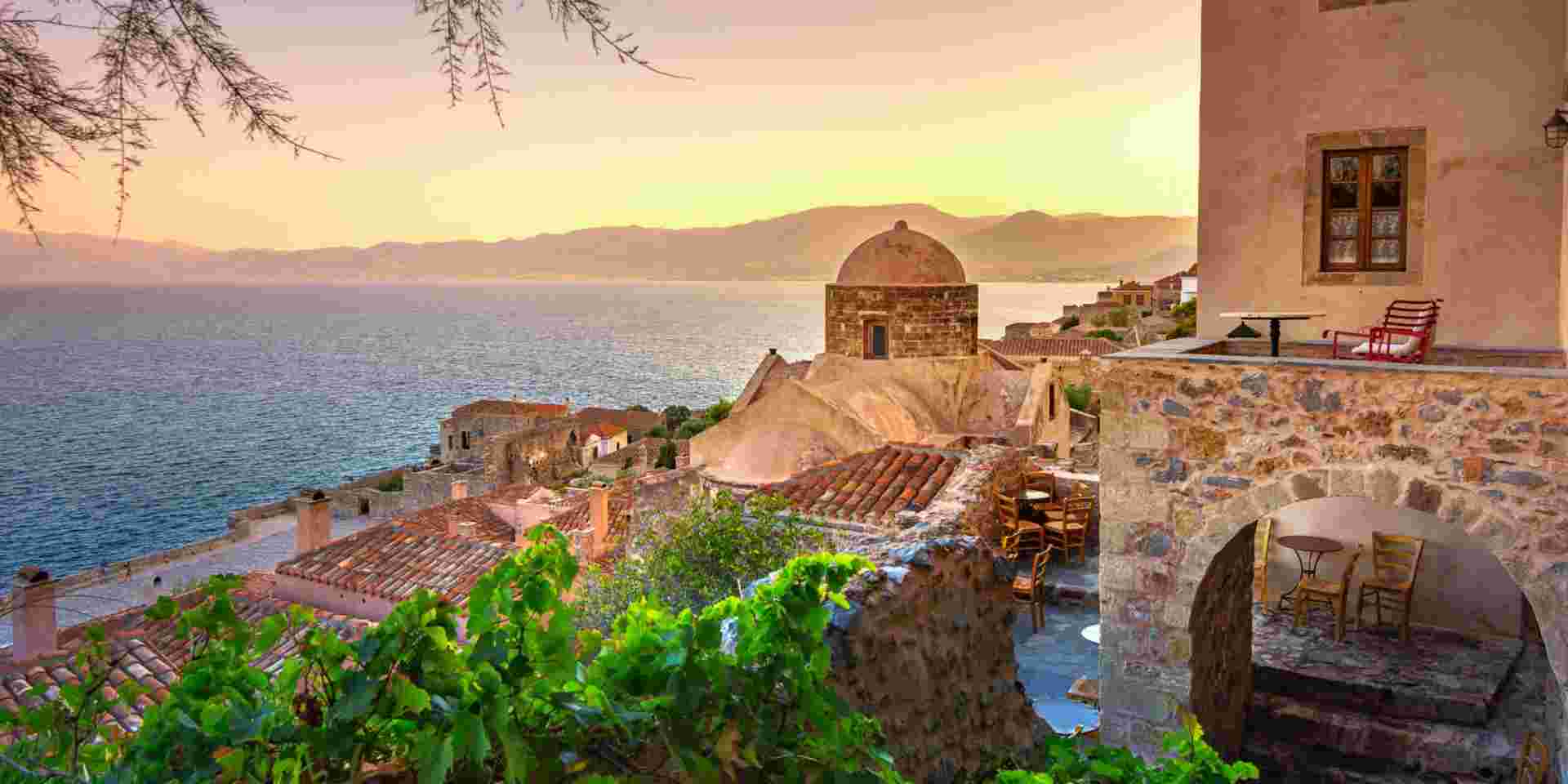
In this article, we chose to focus only on the Castles and Fortresses of the Peloponnese, because of their historical importance, and their magnetic beauty.
However, we would like to say a few words on the castles scattered all over the country. Greece is one of the few countries in the world with so many castles and fortresses. It is no exaggeration to say that in Greece there are over 600 castles and fortresses. Some small and some big, some ancient and some medieval, and well-preserved. The castles of Greece are not just a part of the distant past. The forts that lived glorious moments in the Middle Ages but they have occupied the international European political and war scene many times in recent history.
Monemvasia Castle, Laconia
One of the most fabulous and special travel destinations in Greece. The rock of Monemvasia, this small island in Laconia that stands proudly in the middle of the sea, hides in its narrow passages secrets and historical memories, while in Spring it is filled with colors, aromas, and sea. Entering the city, you will see that the main road with the Byzantine cobbled path leads to Central Square with the old cannon. A lively place, full of history! The ‘Gibraltar in the Eastern Mediterranean’ as it was rightly called by the Byzantines, Venetians, Franks, Crusaders, who were its inhabitants over the centuries.
Wandering through the streets of Monemvasia, gaze at the houses and properties with the arches and let your imagination travel to the time when pirates and knights lived. One of the most special walks you can enjoy in Monemvasia is the one that starts from Panagia Myrtidiotissa and leads to Epano Poli, the now deserted settlement at the highest point of the castle with a view that will take your breath away. Another route, is the one to the gate (Portello) that leads to the sea, with the waves crashing the walls and animating scenes from the pirate raids in our minds.
History of Monemvasia
Monemvasia’s Castle is on a rock, with unique access from the mainland. The Laconians settled on that narrow strip of land around the 6th AD. to protect themselves from the Arab invasions. They also built the first wooden, movable bridge that connected the rock with the shore, hence the name of the castle which means “unique entrance”. The castle flourished during the Byzantine years from the 12th to the 14th century, a period during which the famous Byzantine churches that adorn the island were built.
Especially the period from 1282 to 1341 is the golden age of the city. In 1464 Monemvasia will become a Venetian possession. In 1540 it was surrendered to the Turks and in 1690 the Venetians occupied it again. Its Venetian name was ‘Napoli di Malvasia’. In 1715 the Turks acquired Monemvasia from the Venetians and killed or captured all the nobles. The post-Byzantine History of Monemvasia ends on July 21, 1821, when the Turks after a siege hand over the keys of the city to Prince Al. Katakouzino.
Today, the Castle of Monemvasia with its two settlements is excellent for tourism and is among the most beautiful sights in the country.
Mystras Castletown, Laconia
Five kilometers northwest of Sparta, on a rocky hill at the foot of Taygetos, rises the impressive Castletown of Mystras. It is one of the most important castles in the country, which in 1989 was designated by UNESCO as a World Heritage Site. Mystras, also known as Myzithras in the Chronicle of Morea, was a fortified Greek city and former municipality (Municipality of Mystras) in Laconia in the Peloponnese Region. Mystras was the capital of the Byzantine Despotate of Mystras in the 14th and 15th centuries. It experienced a period of prosperity and cultural flourishing. The area remained inhabited throughout the Ottoman period when it was mistakenly considered by western travelers to be ancient Sparta.
The most famous surviving monuments are Hagia Sophia, the Palace of the Despots, the Monastery of Pantanassa, the Diocese, Agios Theodoros, Panagia Odigitria, while on the south side of Kato Chora there are the ruins of the mansions of Laskaris and Frangopoulos. The museum completes in the best way the tour in one of the most important archeological sites of Greece.
Castles of Methoni & Koroni, Messenia
The Castles of Methoni and Koroni are two tourist attractions that one must-see when visiting the Peloponnese and, especially, the prefecture of Messenia. They look like they belong on a movie set. The southeastern Peloponnese is a dream destination for every traveler. If you are looking for quiet areas with beautiful sandy beaches, then you are in the right place. If you want to visit an important archeological site, Ancient Messina is close by. Koroni and Methoni will enchant you with their endless beauty, with the turquoise waters uniquely connecting with nature and the picturesque houses, while their castles in the background are known as the “Eyes of Venice” in the Mediterranean.
Both castles occupy a strategic position and have been the object of desire for many forces that have passed through the coastal region of the Peloponnese. In the past, these castles were important commercial and naval centers. They were built by the Venetians in the 13th century and have withstood sieges, wars, and natural disasters. Today, the castles of Methoni and Koroni are open to the public and very important sights of the Peloponnese.
Methoni Castle
Access to the castle of Methoni is by a bridge that connects the castle with the beach, over a sea moat. It was built by the Venetians in 1209 and extends to 93 acres. Inside, the walls are incredibly impressive. It is one of the most important castles in Greece in terms of historical value and beauty. The whole area of the castle is very large. The smallest fortified island in the south stands out, with the small fort, known as “Bourtzi”. The castle consists of two parts. The south, where the city stretches is surrounded by a simple wall with towers and the more fortified north. An intermediate, lower wall consisting of five towers separates the two sections.
Koroni Castle
The castle of Koroni is an excellent example of Venetian architecture. Over time it underwent many changes, with the Ottomans being the last to leave their mark. Once inside, you will feel a strange feeling as if someone still lives there. Many of the houses are still uninhabited, while there is also a monastery. It must be very strange to live there! It is good to have 1-2 hours free to explore it, as you can go swimming in the secret coves. We advise you to visit the uninhabited monastery first. There you will find a tower which is the highest accessible point of the castle. From there you will enjoy a magnificent view of the adorable town.
Neokastro Fortress, Messenia
The fortress of Neokastro was built by the Ottoman Turks in 1573, after their defeat in the naval battle of Nafpaktos, to protect the southern entrance of the Gulf of Navarino and to control the commercial sea route from East to West and vice versa. In 1686-1715 it was under Venetian occupation and in 1770 it was occupied by the Orlov Brothers. The Greeks occupied Neokastro in 1821 and maintained it until 1825. After strong resistance they handed it over to Ibrahim. In Navarino Bay, in October 1827, the fleets of the Great Powers of the time fought and defeated Ibrahim to force him to stop the looting in Moria.
After 1830 the new city was founded outside the walls named “Pylos”, the castle was abandoned and the citadel area was turned into a prison. Neokastro or Neo Navarino, as it was named, was built at a time when firearms were used to conduct defensive and offensive warfare. The walls were thick, to withstand the shelling, low, to avoid the target of the missiles and with a slope, to make the impact softer, and they were reinforced with strong bastions.
Palamidi Fortress and Bourtzi Castle in Nafplio, Argolis
Nafplio is a small Peloponnesian picturesque seaside town, the capital of the newly formed Greek state, in the period 1828-1833. Since it was the capital of the country, the city is full of historical monuments related to that period. Nevertheless, the history of Nafplio dates back to the Mycenaean years and the wider area is full of monuments from many different periods.
Palamidi Fortress
Perhaps the most recognizable and well-known attraction of the city is the fortress of Palamidi. This fortress is located literally above Nafplio and offers excellent views. Both to those who will admire it from the city and to those who will see it up close. It was built during the Venetian occupation, in 1687, by the Venetians. After the end of the Greek Revolution and the establishment of the Greek state, it functioned as a prison. Its best-known prisoner was Theodoros Kolokotronis, who was imprisoned there in 1833. Even today you can see the hero’s small cell!
Today, the fortress is accessible, either via an asphalt road that reaches the entrance or via stairs. The stairs are numerous (reports for 960, we will leave it up to you to see if this is a myth or not!). Nevertheless, the access by stairs offers a gradual beautiful view of the town.
Bourtzi Castle
An equally recognizable attraction is Bourtzi Castle. The castle is known by various names, such as Thalassopyrgos, Kastelli (for the Venetians), and finally as Bourtzi for the Ottomans. It is a small island a short distance from the port of the town. It was built in 1473, while the final form took place around 1698. During the revolution and more specifically due to the civil conflict, the government back then too refuge there for their pretection in 1824 and 1827. Also, Bourtzi was the first place of imprisonment of Theodoros Kolokotronis.
In 1865, it ceased to function as a fortress and became the residence of the executioner who executed the death row inmates of Palamidi. In the 20th century, with the help of private funds, they restored it. Therefore, it operated as a 12-room hotel as well as a restaurant. The hotel ceased operations during the Greek Junta from 1967-1974. Today it is visitable but unfortunately, it has not been highlighted at all. No signs are describing and explaining the various parts of the monument. However, you will see a very impressive castle and a wonderful view of the city of Nafplio. It is located directly opposite. There is no entrance fee for the castle but to go you will need to take a boat. You will find these boats on the waterfront of the city, only 10 minutes away
Chlemoutsi Castle, Elis
It is located at the top of a hill, in Kyllini and dominates the plain of Ilia. It was founded in 1220-1223 by Geoffrey I of Villehardouin and was the most powerful fortress of the Principality of Achaia. For its construction, Geoffrey II clashed with the Catholic clergy and used their proceeds to build it. Clermont was the new castle name, in Greek Chlemoutsi and the Venetians called it Castel Tornese. After the death of its founder, the castle became a field of unrest, until 1315. It was then when it was occupied by the Catalans.
It was conquered by the Franks and remained under their rule until the beginning of 1400 when it came under the rule of Palatine Conte of Kefalonia and Zakynthos and Despot of Epirus Charles I Toccos. In 1427, due to the marriage of the daughter of Leonardo II Tokko, Magdalene-Theodora, with Constantine XI Palaiologos, the castle falls peacefully to the latter. In 1460 it was occupied by the Turks and the Venetians from 1687 – 1715. However, it returned to the Turks again until 1821. Damages by the bombings of Ibrahim happened in the year 1826. The castle retains its strong Frankish character, an excellent example of fortress architecture of the Frankish era.
Do you want us to help you design a ‘Fortified’ itinerary around the Peloponnese? Who knows, Castle-Hopping might just be the next big travel trend! Contact us here and we will connect you with one of our experienced Travel Designers!
Feeling Ready?
From our blog
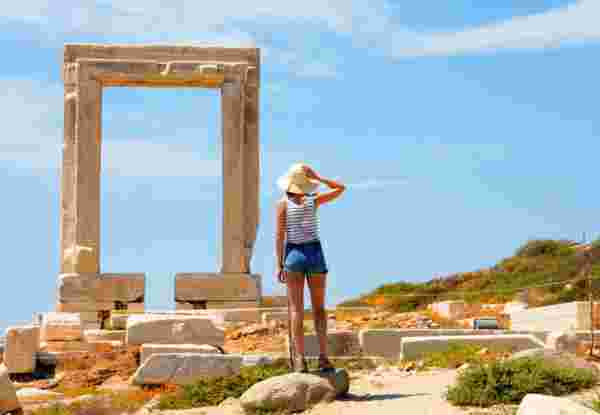
Honeymoon in Naxos: A Complete Guide
READ MORE
Visiting Athens with Kids: A helpful Guide
READ MORE
Paros for Seniors: Tips and Itinerary
READ MORE
Best Resorts in Greece for Families: Your Ultimate 2025 Guide
READ MORE
How to Enjoy Santorini for Seniors
READ MORE
Honeymoon in Paros Island
READ MORE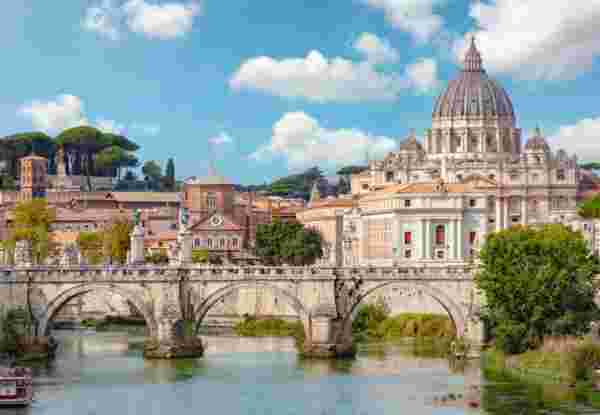
Rome Travel Guide: What to Do, When to go and Where to Go
READ MORE
The Best Greek Islands for Couples, According to a Luxury DMC
READ MORE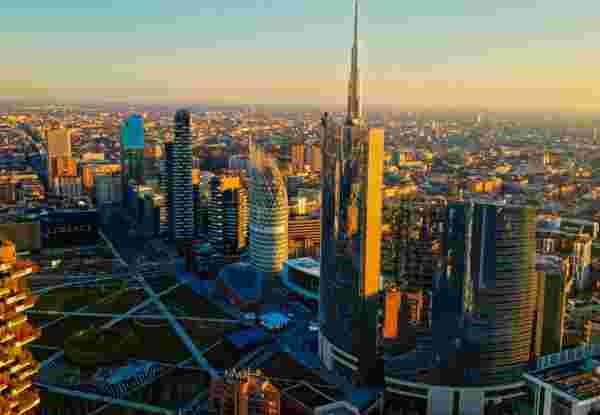
Discover Milan: Top Attractions
READ MORE
